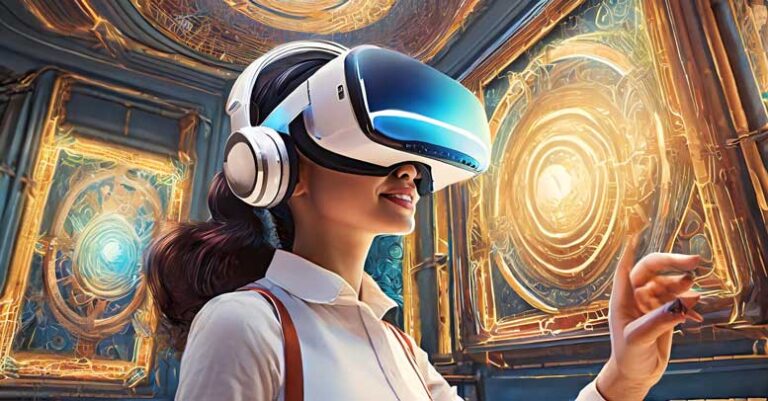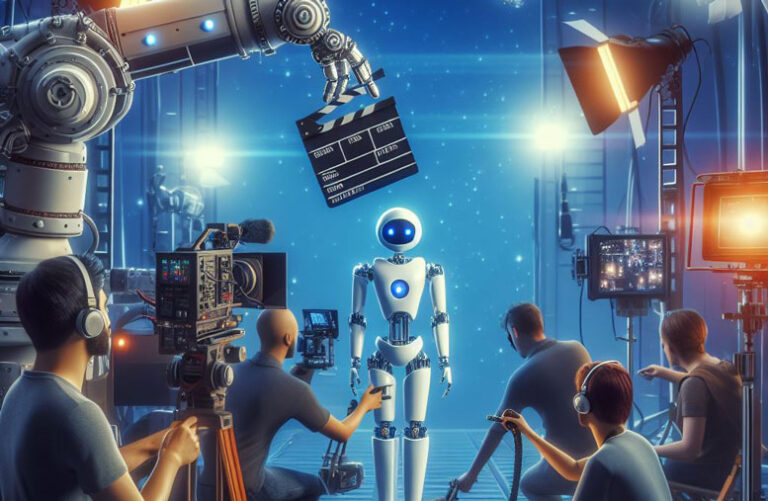A Dive into the World of AI Photo Colorizer Tools
Table of Contents
AI Photo Colorizers, also known as AI photo restorers, are software applications or online services that uses artificial intelligence and machine learning to automatically colorize black and white old pictures. Some of the best AI Colorize Photo Tools in 2024 are: 1. Palette.fm 2. Cutout.pro 3. Colorize.cc 4. Image Colorizer 5. Hotpot.ai 6. Img2Go.com 7. Picwish.com 8. Vance.ai 9. Photoshop Restoration Neural Filter
The world of black and white photos holds a timeless charm, capturing moments through a distinct visual lens. But what if you could inject a splash of color, breathing new life into these historical or personal treasures?
AI Photo Colorizer Tools are powerful software applications that utilize artificial intelligence to bring vibrant hues to monochrome images.
This article delves into the fascinating world of AI Image Colorizers, exploring their inner workings, potential impact, and exciting future trajectories.
What is an AI Colorize Photo Tool?
An AI Colorize Photo Tool is a software platform or an online service that leverages machine learning algorithms to automatically colorize black and white photographs. Unlike basic filters or manual editing in Photoshop, these tools go beyond simple color overlays.
They analyze the image content, identify objects, and use their knowledge of color relationships to generate realistic and natural-looking colorizations.
How Does an AI Photo Restoration Tool Actually Work?
AI Photo Colorizer Tools work with existing visual information, aiming for historically accurate or aesthetically pleasing colorization within the boundaries of the original photo.
The magic behind AI Photo Colorizer Tools lies in their underlying technology, primarily machine learning and deep learning.
These tools are trained on vast datasets of paired images, where each black-and-white photo is matched with its corresponding colorized version.
This training allows the AI to learn the relationships between image elements, textures, and their corresponding color palettes.
During the colorization process, several steps unfold:
- Image Upload: You upload your black and white photo to the platform.
- Analysis: The AI analyzes the image, identifying objects, textures, and scene elements.
- Color Prediction: Based on its training data, the AI predicts the most likely color for each element in the image.
- Refinement: The predicted colors are refined to ensure consistency and natural-looking transitions.
- Output: You receive the colorized version of your image, ready to be shared or admired.
The complexity of these processes varies depending on the specific tool.
Some generate basic colorizations, while others produce detailed and nuanced results, even taking into account lighting and shadows.
Witnessing the power of AI Photo Colorizers
To truly appreciate the capabilities of AI Photo Colorizer Tools, let’s explore some real-world examples:
- MyHeritage: This paid tool utilizes deep learning and historical context to breathe vibrant life into old family photos.
- ImagenAI: This AI-powered tool allows for precise control over colorization, letting you adjust specific areas or apply different color palettes.
- DeOldify: Focused on historical photos, DeOldify uses advanced algorithms to produce realistic colorizations of old black and white images.
- Palette.fm: This mobile app offers quick and convenient colorization with a focus on portrait photos.
- Colourise: This online tool allows for batch processing of multiple images, making it ideal for large collections.
These are just a few examples; the landscape of AI Photo Colorizer Tools is constantly evolving, with new features and capabilities emerging frequently.
Society Impact of AI Photo Restoration Tools
The rise of AI Photo Colorizer Tools presents a significant impact on society, influencing different aspects like:
- Historical Preservation: By bringing color to historical photos, these tools can enhance our understanding of the past, making it more relatable and engaging for younger generations.
- Personal Memories: Colorizing old family photos can breathe new life into cherished memories, sparking conversations and connecting us to the past in a more vivid way.
- Creative Expression: These tools open doors for artistic exploration, allowing users to experiment with color palettes and personalize their black and white photos.
- Accessibility: With easy-to-use interfaces and affordable options, AI Image Colorizer Tools democratize colorization, making it accessible to everyone, not just professional photo editors.
However, concerns also arise:
- Accuracy and Historical Representation: Colorization can be subjective, and inaccurate color choices could misrepresent historical events or individuals.
- Authenticity and Originality: Questions arise about the authenticity of colorized photos and who owns the rights to these altered versions.
- Ethical Considerations: Colorization can perpetuate harmful stereotypes or biases present in the original images, requiring careful consideration and responsible use.
Ethical Considerations
As with any powerful technology, responsible development and ethical considerations are crucial for AI Photo Colorizer Tools. Here are some key points:
- Transparency and User Education: Users should be aware of the technology’s limitations and potential biases to ensure informed and responsible usage.
- Data Curation and Fairness: Training data should be diverse and representative to avoid perpetuating harmful stereotypes or biases in colorization results.
- Transparency in Ownership and Attribution: Clear guidelines on ownership and attribution of colorized images are essential to respect intellectual property and avoid ethical issues.
Future of AI Photo Colorizer Tools
The future of AI Image Colorizer Tools is brimming with possibilities. Here are some exciting prospects:
- Advanced Colorization Techniques: Imagine tools that leverage historical context, geographical information, and even weather data to generate even more historically accurate and realistic colorizations.
- Interactive Colorization: Tools that allow for real-time feedback and control, letting users adjust specific elements, adjust color palettes, and refine the colorization process collaboratively.
- Integration with Other AI Tools: Seamless integration with photo restoration tools, facial recognition technology, and even animation software, leading to the creation of moving, colorized versions of historical moments or personal photos.
- Educational Applications: AI Image Colorizer Tools can be used in educational settings to bring historical events to life, spark discussions about cultural representation, and teach critical thinking skills about image interpretation.
- Democratization of Historical Understanding: By making colorization accessible and affordable, these tools can broaden public engagement with history and foster a deeper understanding of the past.
However, addressing ethical concerns remains crucial.
Continued dialogue and collaboration between developers, historians, artists, and users will ensure responsible development and harness the power of AI Photo Colorizer Tools for the benefit of historical understanding, personal memory preservation, and artistic expression.

FAQs: Dive Deeper into the World of AI Image Colorizer Tools
1. What are the benefits of using AI Photo Colorizer Tools?
- Bring life to black and white photos: An AI image color changer can enhance memories, historical understanding, and creative expression.
- Accessibility: Easy-to-use tools make colorization available to everyone, not just professionals.
- Experimentation and exploration: Try different color palettes and personalize your photos for unique outcomes.
- Educational applications: Enhance historical learning and discussions about cultural representation.
2. Are AI-colorized photos considered “real”?
The concept of “real” in photography is complex. While AI colorization uses advanced algorithms, it’s an interpretation based on data and the artist’s intent. Responsible use and transparency are crucial.
3. Can I sell AI-colorized photos?
Copyright laws surrounding colorized images are evolving. Check the tool’s terms and consult legal advice for commercial use.
4. What are some free AI photo restoration tools I can try?
While many advanced tools offer paid subscriptions, several free options allow you to explore this technology:
- Cutout PRO AI Colorizer: A credits-based colorization tool. They offer 5 credits to get started on the Free plan account.
- Image Colorizer: Web-based tool with basic colorization for single images, perfect for quick experiments.
- DeepAI: While requiring some technical knowledge, DeepAI’s open-source colorization model allows for customized control.
- Photomyne: Mobile app specializing in old photo colorization, offering free trials and affordable plans.
- Hotpot.ai: This website offers a wide range of AI tools such as image generator, AI Headshot Generator and AI photo editing.
5. Are there AI Colorizer Tools specifically for portraits?
Yes, several platforms cater to portrait colorization, offering advanced features and refined results:
- Fantasy Portrait Generator by DeepAI: Are you a fantasy-imagery fan? If so, this is the AI tool for you!
- befunky.com: An AI-powered photo enhancer built specifically to retouch portrait photos.
- Inpaint: This tool combines colorization with AI inpainting to restore damaged portrait photos before adding color.
- VanceAI: An AI-based portrait retoucher and face-enhancing tool that helps retouch any face in one click.
- YouCam Online Editor: A free online AI photo colorizer using the latest AI technology to colorize black and white photos.
6. How can I improve the quality of my AI-colorized images?
Here are some tips:
- Start with high-resolution black and white photos: The clearer the original image, the better the colorization results.
- Pre-process your photos: Adjust brightness, contrast, and clarity for optimal colorization.
- Experiment with different tools and settings: Each tool has its strengths and weaknesses, so find the one that best suits your image and desired outcome.
- Provide specific feedback: Some tools allow adjusting specific areas or choosing color palettes for more control.
- Refine the results manually: Use image editing software to fine-tune details like shadows, highlights, and color balance.
7. Can AI Photo Colorizer Tools replace professional photo restoration services?
While AI tools offer convenient and affordable colorization, professional services provide expert attention and historical accuracy crucial for valuable photos or archival projects. Consider the specific needs of your image and the desired outcome when choosing the right approach.
8. How can I learn more about AI Image Colorizer Tools and stay updated on their development?
Stay informed by:
- Following blogs and online communities: Explore websites and forums dedicated to AI tools, photo editing, and historical preservation.
- Subscribing to newsletters and social media feeds of developers and platforms.
- Attending webinars and online courses: Several resources offer learning opportunities about AI colorization and related technologies.
- Participating in online discussions and forums: Share your experiences, ask questions, and learn from other users and experts.







